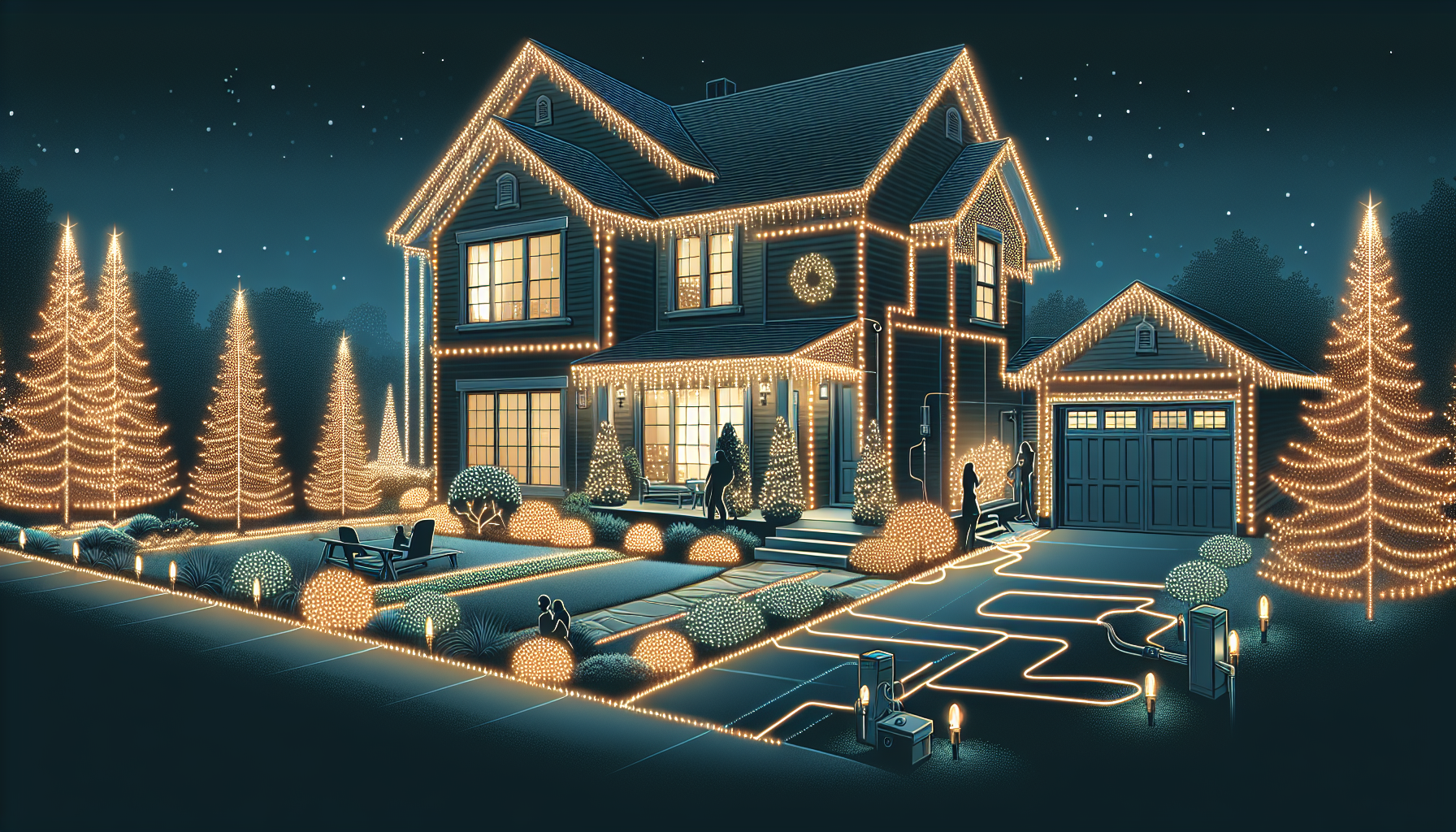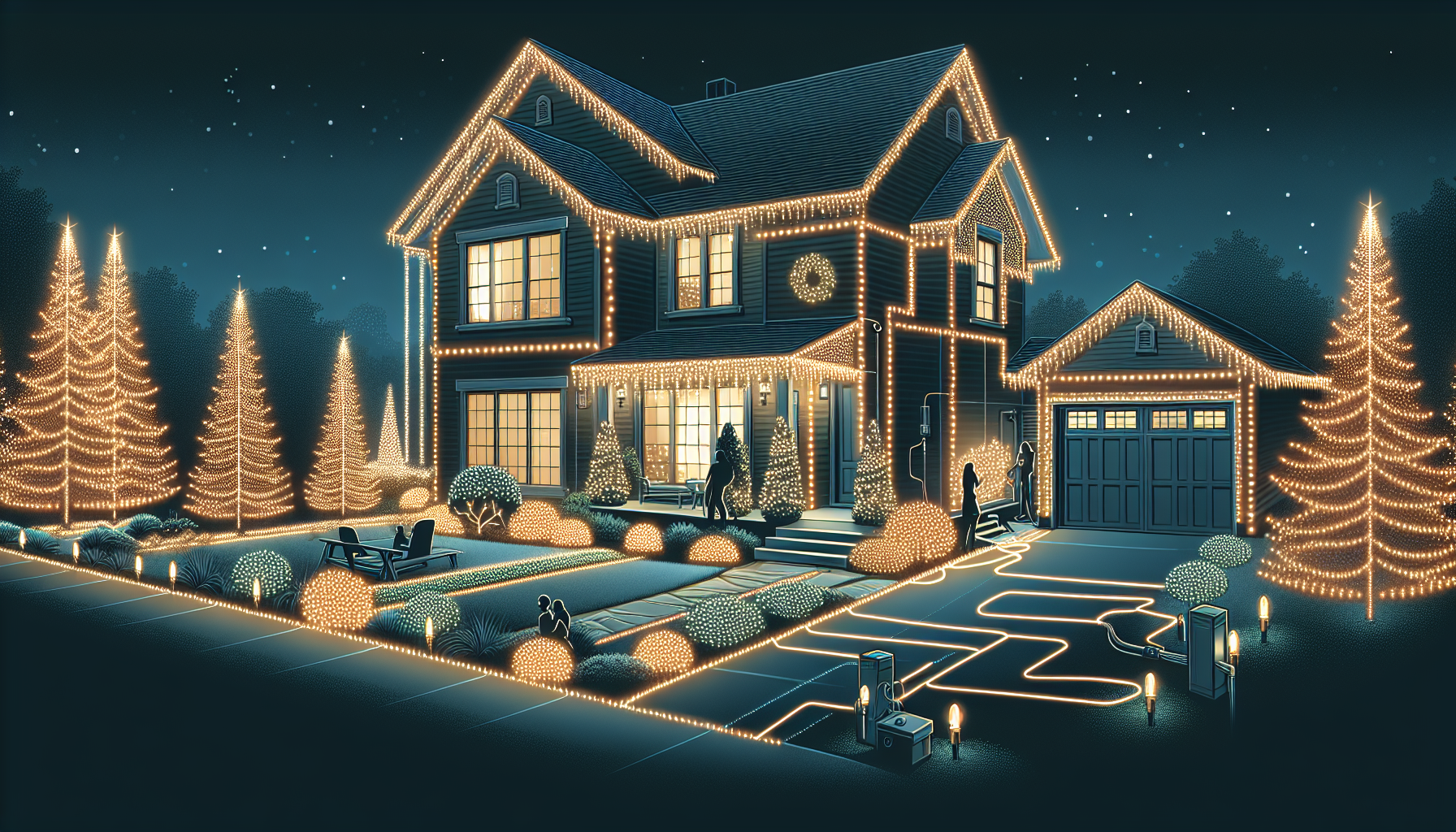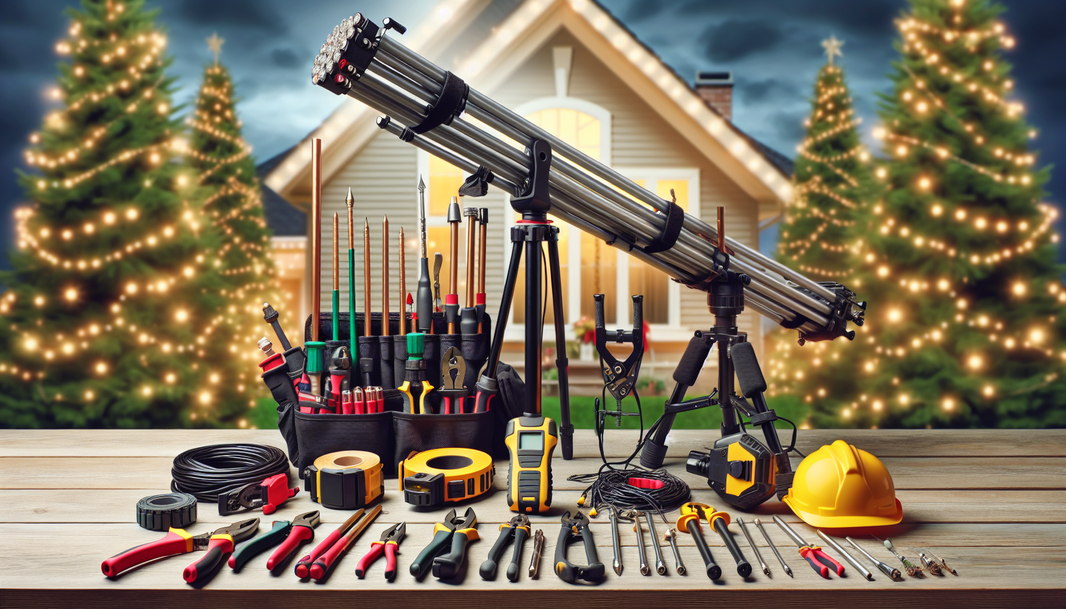Table of Contents
- Understanding the Power Supply
- Maximizing the Power Supply
- Balancing Aesthetics and Practicality
- FAQ
Understanding the Power Supply
When it comes to installing Christmas lights or permanent lighting, one of the most crucial factors to consider is the flow of the lights. This is where the power supply comes into play. The location and accessibility of the power source can significantly impact the overall design and execution of your lighting project.
Imagine you’re planning a lighting installation for a house. You’ve identified three potential power supply locations: one inside the garage against the back wall, another by the door, and a third on the right side of the house. The question is, which one would be your preferred power supply, and which one would you rule out first?
Choosing the Right Power Supply
In this scenario, the power supply on the right side of the house would likely be the preferred choice. Why? There are a few factors to consider:
- Visibility: The right side of the house has a walkway, which means the power supply will be more visible to those viewing the display. This can be an important aesthetic consideration, especially for permanent lighting installations.
- Accessibility: The right side of the house may have less “service stuff” or obstructions, making it more accessible for running the lighting cables and connections.
Of course, there may be instances where the other power supply locations are more convenient or practical. For example, if the power supply on the right side is hidden behind a bush or in an inconvenient location, you may need to consider one of the other options.

Maximizing the Power Supply
Now, let’s say there’s only one power supply available, and it’s located in a specific spot, such as right by the door or behind a bush. How do you approach this scenario?
The key is to understand the flow of the lights and how you can maximize the use of the single power supply. This may involve strategically planning the layout of your lighting display to ensure efficient cable routing and minimize the need for additional power sources.
Optimizing Cable Management
When working with a single power supply, careful cable management becomes crucial. You’ll need to consider the best way to route the cables from the power source to the various lighting elements, ensuring they are hidden, secure, and don’t create tripping hazards.
This may involve using cable covers, running the cables along the roofline or along the edges of the house, and finding creative ways to conceal the wiring. The goal is to create a seamless, visually appealing lighting display while maintaining safety and functionality.
Balancing Aesthetics and Practicality
When it comes to Christmas lights and permanent lighting, the flow of the lights is not just about the physical layout and cable management. It’s also about balancing the aesthetic appeal of the display with the practical considerations of power supply and installation.
While the visibility and accessibility of the power supply are important factors, you also need to consider the overall design and impact of the lighting. This may involve making strategic decisions about the placement of lighting elements, the use of different lighting types (e.g., icicle lights, string lights, spotlights), and the integration of the lighting with the architectural features of the home.
Achieving a Cohesive Lighting Design
The key to a successful lighting installation is to create a cohesive and harmonious design that enhances the appearance of the home and complements the surrounding environment. This may require careful planning, experimentation, and a willingness to make adjustments to ensure the final result meets your desired aesthetic and practical goals.
Remember, the flow of the lights is not just about the physical layout but also about the overall visual impact and the seamless integration of the lighting elements into the overall design of the property.
FAQ’s
What is the most important factor to consider when choosing a power supply for a lighting installation?
The most important factor to consider when choosing a power supply is the accessibility and visibility of the power source. You want to select a location that is easy to access for installation and maintenance, and one that is visually appealing or hidden from view.
How can I ensure efficient cable management when working with a single power supply?
To ensure efficient cable management with a single power supply, you should:
- Plan the layout of your lighting display to minimize the need for long cable runs
- Use cable covers or conceal the cables along the roofline or edges of the house
- Avoid creating tripping hazards by securing the cables and keeping them out of high-traffic areas
- Consider using low-voltage lighting options to reduce the size and visibility of the cables
How can I balance the aesthetics and practicality of a lighting installation?
To balance the aesthetics and practicality of a lighting installation, you should:
- Carefully plan the placement and integration of the lighting elements with the architectural features of the home
- Experiment with different lighting types and techniques to achieve the desired visual impact
- Be willing to make adjustments to the layout and design to ensure the final result is both visually appealing and functional
- Prioritize safety and accessibility while also considering the overall aesthetic of the lighting display
What are the key considerations for maintaining the flow of lights in a permanent lighting installation?
The key considerations for maintaining the flow of lights in a permanent lighting installation include:
- Strategically planning the power supply locations to ensure efficient cable routing and accessibility
- Utilizing cable management techniques to conceal and secure the wiring
- Integrating the lighting elements with the architectural features of the home for a cohesive design
- Regularly maintaining and troubleshooting the lighting system to ensure consistent performance


